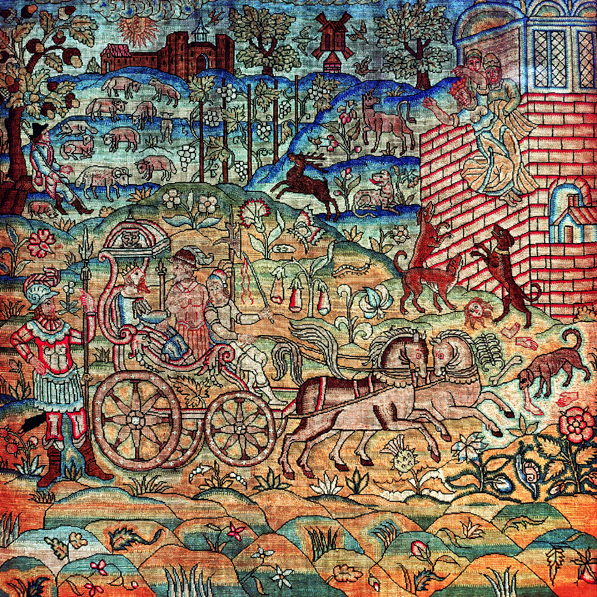Image Details

Death of Jezebel/Holburne Museum, Bath, UK/Bridgeman Art Library
A royal chariot tours the lush landscape of Samaria, stopping just outside the palace walls. With its green hills, fecund grapevines and abundant flowers, the scene depicted in this early-17th-century silk embroidery would appear peaceful—if not for the gruesome detail at left, which shows a woman being pushed out the palace window to a pack of hungry dogs. On the ground below, a few sated dogs sniff around the woman’s remains—her head, bones, hands and feet. The dead woman is, of course, Jezebel; the king in the chariot is Jehu.
According to 2 Kings 9, Jehu orders the palace eunuchs to throw Jezebel out a window. When he later commands his men to bury her, little remains: “All they found of her were the skull, the feet and the hands” (2 Kings 9:35). Jehu’s men inform the new king that Elijah’s prophecies have been fulfilled: The queen’s corpse has been devoured by dogs; her body is mutilated beyond recognition, so that “none will be able to say ‘This was Jezebel’” (2 Kings 9:37). And yet, it is Jezebel, not Jehu, whose memory remains most vivid, both through the colorful biblical account and the countless paintings, movies, poems and other writings that have retold her story.
